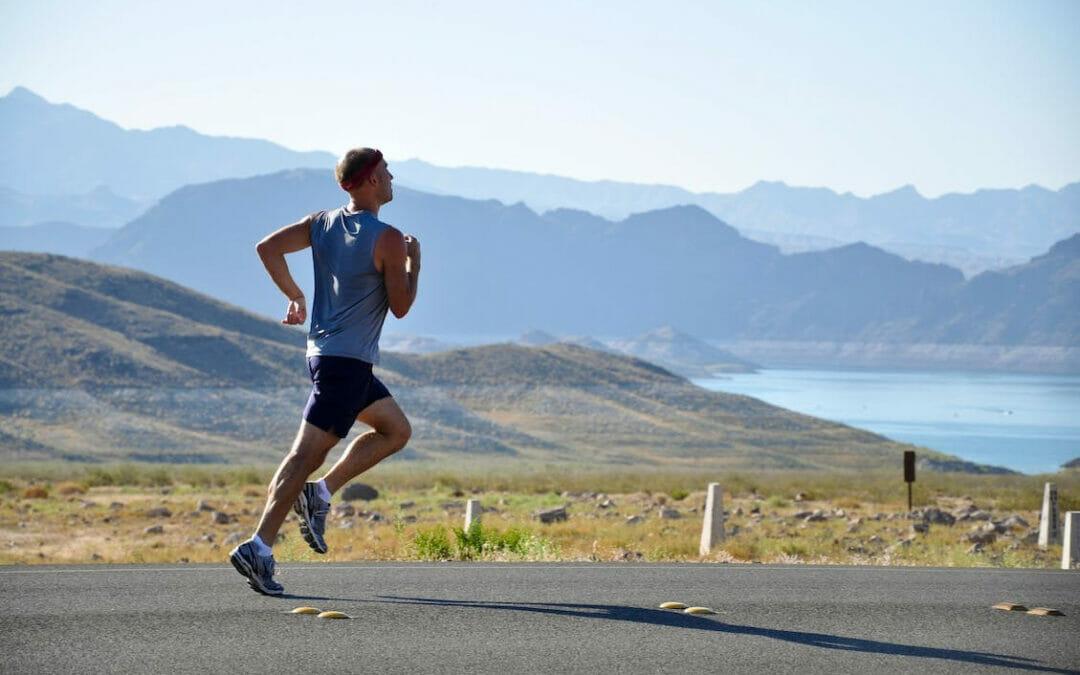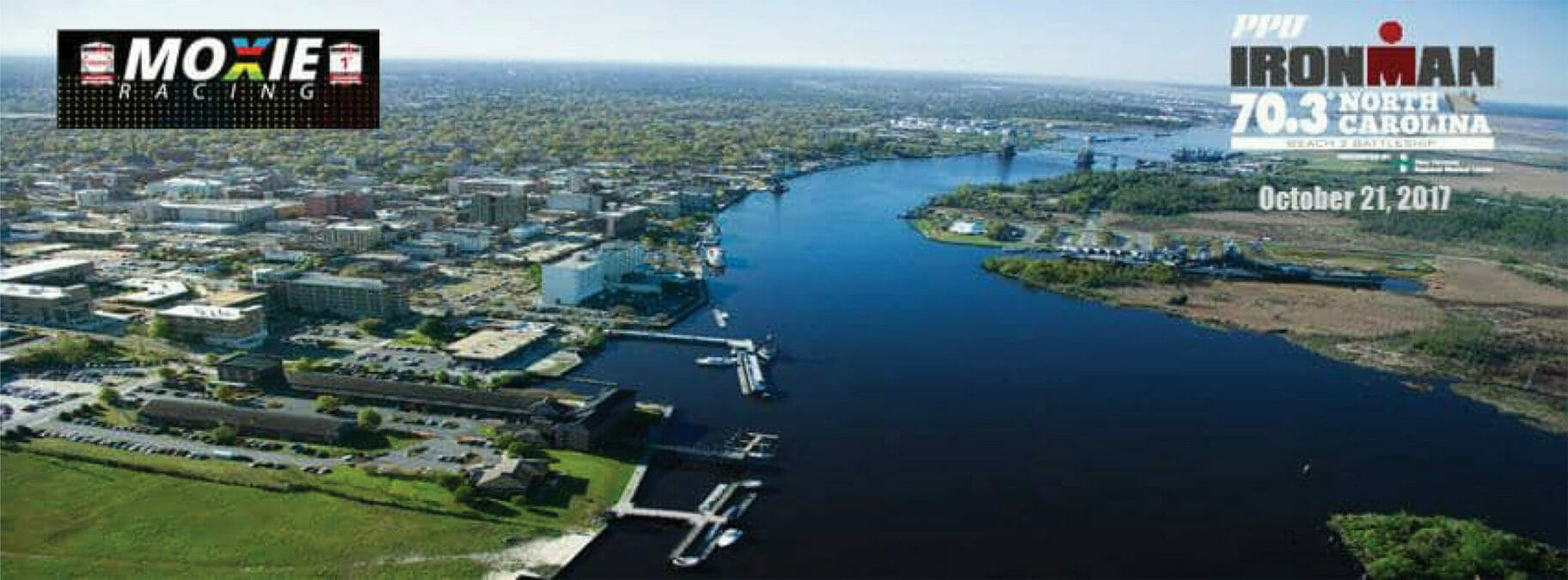
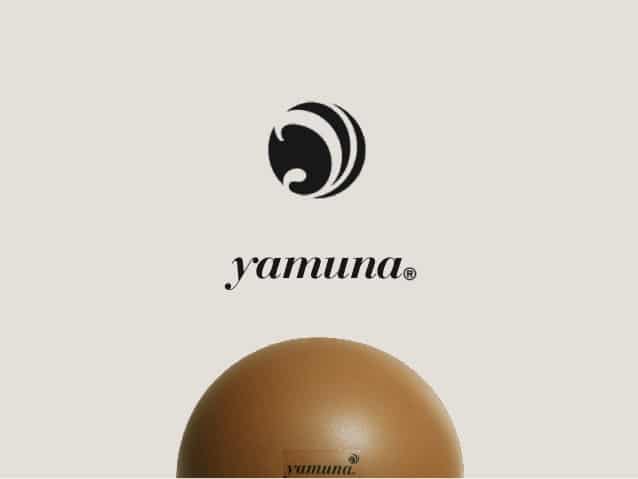
Yamuna Body Rolling – Better than Foam Rolling?
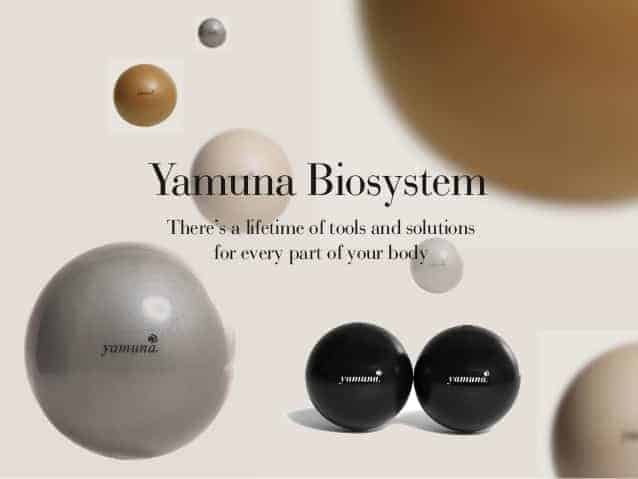 Being immersed in the fitness industry provides me with a ton of different opportunities to experience different techniques, methodologies, and products. I recently had the privilege of a one-on-one demo of the Yamuna® body rolling technique that focuses on myofascial release.
Being immersed in the fitness industry provides me with a ton of different opportunities to experience different techniques, methodologies, and products. I recently had the privilege of a one-on-one demo of the Yamuna® body rolling technique that focuses on myofascial release.
Recovery
Most runners, triathletes and other endurance athletes tend to neglect recovery. Why? Well, let’s face it, it could get kinda boring. Yoga classes are slow-moving, pose-to-pose movements, and foam rolling isn’t done at the break-neck pace we prefer. But, if you have ever been injured, one of the first questions asked is “would it have happened if I spent more time stretching and recovering?” The answer is commonly “Yes”.
Yamuna® body rolling is another technique to incorporate myofascial release into your fitness regimen. Myofascial release is basically a technique that provides stretching, compression and sustained pressure into restricted areas of connective tissue in the body to eliminate pain and restore motion.
Benefits of myofascial release techniques like Yamuna Body Rolling include:
- Increases blood flow. …
- Improves muscular range of motion.
- Reduction of muscle soreness.
- Maintains normal functional muscular length. …
- Encourages movement of your lymphatic system
The Yamuna Body Rolling Technique
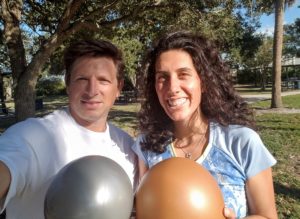 I had the pleasure of meeting Emily Stein, Certified Yamuna® Body Rolling Practitioner, and Personal Trainer who specializes in flexibility and mobility training using soft medicine balls and Active Isolated Stretching, located locally here in Tampa. She put me through a thirty-minute hands-on demonstration of this technique which uses different sizes of synthetic balls instead of a tubular foam roller.
I had the pleasure of meeting Emily Stein, Certified Yamuna® Body Rolling Practitioner, and Personal Trainer who specializes in flexibility and mobility training using soft medicine balls and Active Isolated Stretching, located locally here in Tampa. She put me through a thirty-minute hands-on demonstration of this technique which uses different sizes of synthetic balls instead of a tubular foam roller.
My mention of my tight hamstrings queued Emily to start my demonstration of the Yamuna® Body Rolling technique with my glutes. I sat on a medium-sized ball and rolled the ball slowly and deliberately throughout the range of my gluteus muscles and then slowly crossing down in my hamstrings.
Personally, I don’t use a foam roller, I use a PVC pipe because I enjoy pain. Well, not really but I find that it triggers more nerve receptors signaling where I need the release. Not that I have not used a foam roller. I have. I understand the use of a softer medium as it tends to mold to the area being worked on. The balls do the same thing, but because they are even softer than a foam roller they are able to cradle the muscle thereby triggering the release of more of the connective tissue. At least that is what I was experiencing.
Emily demonstrated not only the self-recovery techniques but also her incorporation of the Yamuna® balls into her personalized individual service. This one-on-one service where she uses her hands in concert with the Yamuna® Balls stretches deeper into the meat of the muscle while releasing of the connective tissue.
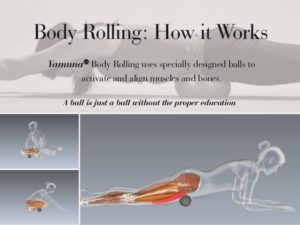 It was eye-opening how the balls release different points that are the foam roller is unable to target. Rolling around in a circle versus a linear motion, allowed by the Yamuna® Balls, signaled more points needing of release, in my opinion.
It was eye-opening how the balls release different points that are the foam roller is unable to target. Rolling around in a circle versus a linear motion, allowed by the Yamuna® Balls, signaled more points needing of release, in my opinion.
The Recommendation
I am sure you can see how the Yamuna® Body Rolling technique is advantageous to runners and endurance athletes. The pounding we put on our bodies causes all sorts of issues with not only muscles but our connective tissue. Just for this reason, I continually suggest incorporating massage, by a licensed massage therapist, at least once every two weeks. This technique, in tandem good stretching sessions, or yoga, will be beneficial in-between visits to your Licensed Massage Therapist.
It is, at the very least, worth a try.
If you would like to schedule some time with Emily Stein, or just inquire for more information, you can contact her through her website at www.rollforfitness.com. Emily helps people who need to and want to improve their movement.
Carpe Vitam!
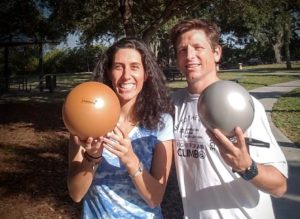
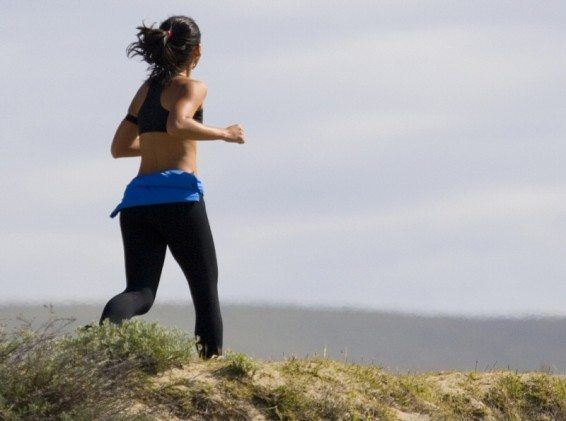
How to Run Faster by Running Slower
I can hear it now….”Know wonder they call you a Goof…you are crazy.”, “So, if I run slower I will get faster? You are out of your mind.” It was not to long ago I used to think the same thing, but as with everything I post, there are reasons and science to back it up.
Let’s face it, logic would dictate that pushing the pace of your easy days, as close to race pace as possible, would help you get fit faster and help you speed up, right? A lot of coaches, including myself, will tell you to run slow on your easy days, and easy days should be making up anywhere from 50-75% of your weekly mileage.
I have clients continuously asking me, “why are my easy days so slow?” The latest is my famous sit downs with my runners telling them to slow down after examining their data and finding them running tempo speeds during an easy day.
The answer to the question is what Arthur Lydiard and most other coaches would call the aerobic system. The aerobic system, or aerobic development, is the one of the most important fundamentals into unlocking your true potential.
Let us first check the stats on the energy contribution the aerobic system provides for races. As you can in the chart below, even the shorter events like the mile, over 80% of the energy required to run the race is produced via the aerobic system.
Aerobic System? What is it?
Aerobic training is the scientific fact that to move your body at higher intensities, the body needs to break down sugar and convert it to glycogen so it can be used as energy.
The aerobic system plus oxygen starts a chemical reaction known as Aerobic Glycolysis which continuously powers continuous endurance activities. In the aerobic system energy ATP is produced through Pyruvic Acid and Lipid/Protein fragments entering the Kreb Cycle and the Electron Transport Cycle.
Uh…what?
During aerobic respiration (yeah, that’s breathing) the body uses all the oxygen it needs to power the muscles. When you are running in your “aerobic zones” (easy runs), your muscles have enough oxygen to produce all the energy they need to perform.
See? Improving your capacity to transport and efficiently use all the available oxygen to produce energy will enable you to race faster since this makes up 85-99% of the energy needed to race.
Since running easy is aerobic development, what better way is there to train the aerobic system? There is none.
What goes on in the body during aerobic development?
Capillary development – capillaries are the smallest of the body’s blood vessels and they help deliver oxygen and nutrients to the muscle tissues while exporting waste products out. The larger the number of capillaries you have surrounding each muscle fiber, the faster you can transport oxygen and carbohydrates to your muscles.
Aerobic training (easy running) increases the number of capillaries per muscle fiber, thus improving how efficiently you can deliver oxygen and fuel to your working muscles and how quickly they can clear waste products.
Myoglobin Increase
Myoglobin is a protein in the muscles that binds the oxygen that enters the muscle fiber. When oxygen becomes limited during intense exercise, myoglobin releases oxygen to the mitochondria to produce more energy.
The more myoglobin you have in the fibers of your muscles, the more oxygen is transported under aerobic stress. Like, uh, during a race. Aerobic training increases the amount of myoglobin you have in your muscle fibers.
Mitochondria creation
Mitochondria are microscopic organelle found in your muscles cells that contribute to the production of ATP (energy). In the presence of oxygen, mitochondria breakdown carbohydrate, fat, and protein into usable energy.
Therefore, the more mitochondria you have, and the greater their density, the more energy you can generate during exercise, which will enable you to run faster and longer.
Aerobic training increases both the number and the size of the mitochondria in your muscle fibers.
Suffice it to say that aerobic development is the single most important factor to long-term development.
Of course, track workouts, VO2 max sessions, tempo runs and cross training will increase your fitness and are still incredibly important to racing faster. However, nothing will help improve continuously like developing the aerobic system.
Aerobic development is dependent upon running in your aerobic zones (for my runners Zones 1-3). This is why running faster on your easy days develop the aerobic system. Once you step out of those aerobic zones, on easy runs you diminish development of your aerobic system, but you also increase the chance for injury. Nope, two negatives do not make a positive in running.
This is one of the single biggest mistakes runners of all experiences make in their training.
As a coach and trainer I have always distinguished myself because I am always able to give my clients and readers the “why”. (Sometimes my clients end up telling me to just shut my mouth. when I am training with them because I am continuously telling them why they are doing each movement of an exercise or workout. I guess it may not be an advantage all the time. Go figure.)
Optimal Aerobic Development
Scientific research has been able to identify how the aerobic system adapts and responds to certain training paces. Physiologically we know:
- Capillary development appears to peak at between 60 and 75 percent of 5k pace.
- Maximum stimulation of myoglobin in Type I muscle fiber (Endurance Muscles) occurs at about 63-77 percent of VO2max. 63-77 percent of VO2max is about 55-75 percent of 5k pace.
- Two researchers, Holloszy (1967) and Dudley (1982) published some of the defining research on optimal distance and pace for mitochondrial development. In short, Holloszy found that maximum mitochondrial development when running at 50-75 percent of V02 max. Likewise, Dudley found that the best strategy for slow-twitch, mitochondria enhancement was running for 90 minutes per outing at 70 to 75 per cent V02 max.
It is pretty clear now right? Your optimal easy run pace for aerobic development is between 55 and 75 percent of your 5k pace, with the average pace being about 65 percent.
It’s also evident that running faster than 75% of your 5k pace on your long run has very little additional physiological benefit.
In fact, the research indicates that it would be just as advantageous to run slower as it would be to run faster. Running around half of your 5k pace is pretty easy right? Wouldn’t you know it, the evidence is clear that it still provides near optimal aerobic development.
Feel free to let me hear your feedback. I welcome any other case studies, personal experiences and other research as I am always learning. I provide you with the best content I can, but I have an open-mind and know that there may be other research out there that may negate information I post.
Carpe Vitam!
~IronGoof

The Ultimate Guide to Compression
It has been a while, and I have a ton of ideas that I am anxiously awaiting to share with you. Unfortunately, time has been getting away from me. Between training myself, a full-time job and being at capacity with 15 individual clients I am struggling for time to post. I promise I will figure out a way to make time. I am so lucky to have such great people to bounce ideas off of, that sometimes, by not posting, I feel like I am letting all of you down, so I promise to post more even if the posts end up being a lot shorter than usual. (Which the length is probably not your favorite part of it anyway. I know I ramble.)
Before I get into the nitty-gritty of my personal opinion of compression, a disclaimer.
I am not a medical professional. The opinions that are shared on this post come from research, my own experiences and the experiences of athletes I have personally witnessed and information I have researched. Every athlete/person has a different body and some products and/or methodologies may be advantageous for some and may even be dangerous for others. This post deals with my beliefs and my research. (Was that clear?)
Lately, most of the questions from other athletes, including clients of mine, have asked about compression. This usually centers around calf sleeves, but does include some of the other compression apparel as well. My answer is usually, for recovery and for temporary use they are great, but not for training. Why? Great question.
I am going to use calf sleeves as my example.

While running, biking, swimming or any major activity using the legs, the muscles are constantly in motion. That motion is what naturally makes the muscles stronger. The muscle moves and is loaded with either more repetitions, or with weight. The full range of motion of each muscle is imperative to the strengthening of the muscle. Compression holds that muscle in place and limits the movement therefore limiting the range of motion. While compressed the muscle cannot fully develop while training. Let’s take a look at the anatomy of the lower leg in the running position.


As you can see the gastrocnemius muscle and Achilles tendon, when the knee is flexed, both constrict and then elongate when the knee straightens. Here is the epitome of the range of motion naturally occurring when running. The more flexion and constriction that take place the more they are stretched causing the breakdown of the fibers. After the recovery period the fibers wrap tighter and in more abundance aiding in a strength and endurance. Now imagine that gastrocnemius muscle remaining constricted due to a calf sleeve. It seems to me that this would dictate that it would not have full range of motion also causing the Achilles tendon to remain stretched without the full ability to absorb the impact. This could unintentionally damage the Achilles tendon, the gastronemius muscle and the soleus muscle. If not damage, it will limit the ability to be strengthened. This is why I personally do not recommend calf sleeves during training workouts.
Recovery
I do however do not mind wearing compression while in recovery to include immediately following the cool down of a workout. I mentioned the healing of the fibers earlier. In order for the fibers to heal and become stronger after the breakdown, blood must be pumped through the muscle and with it water for hydration. Compression does help to isolate that area helping to keep the majority of the blood and water being pumped through the body to the point of the compression. With the legs either elevated or even walking around and at that point limiting the movement, it would allow for the blood to pool in that area helping to re-hydrate the muscle thereby helping to heal faster. In turn, an occasional training run or race, with compression at the tail end of an injury, might also benefit, but in a very limited quantity, and duration.
Carpe Vitam!
–IronGoof
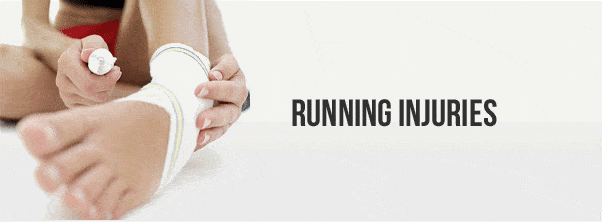
The Goof’s Guide to Common Injuries and Prevention
I believe I have started to write this post on injuries, a number of times, trying to be as clear as possible without seeming conceited or that the information I am giving is absolute. That being said I am giving this disclaimer:
The information in this post comes from experience, my personal research and conversations with Physical Therapists, Bio-mechanical experts, Orthopedists and other athletes. I am not a physician or medical expert, so please take this information as opinion based on cognitive research. Also, there is an exception to every rule and another explanation. I do welcome comments that give constructive criticism, but I make mention to this disclaimer first.
What causes injuries?
You might be surprised to hear that there are only two reasons runners (and other athletes) get injured; accidents and imbalance. Accidents are obvious right? For example; rolling the 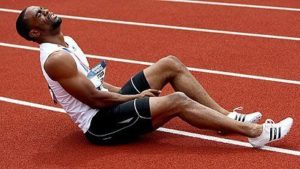 ankle stepping off a curb, falling, being hit by a bicycle, etc.
ankle stepping off a curb, falling, being hit by a bicycle, etc.
Imbalance will cover the why’s of the rest of the injuries. The human body is designed for every system to work in synergy, therefore when one piece of the puzzle is not operating a full capacity or efficiently, the other systems have to do more work. This is when the imbalance occurs.
When talking with Physical Therapists and Bio-mechanical experts I was shocked at some of the stories I heard. One story I heard was of a football player who was training, running 100s up and down the field carrying a ball. He had extended his shoulder just barely beyond its usual range of motion, and he ended up with severe pain in his opposite quadricep. “What?!!!!” was my initial reaction, however, I was then educated on the connective tissue (ligaments, tendons etc) which can be traced from the very top of our skull, down through our torso and into the extremities. Everything is connected.
Common Injuries
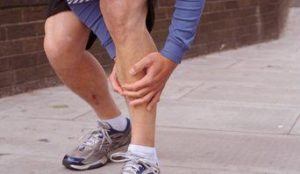
As another example, one of the most popular injuries for newer runners are the dreaded shin splints or medial tibial stress syndrome (MTSS).
Scientifically it is caused tiny micro tears of the fibers connecting the medial soleus fascia through the periosteum of the tibia where it inserts into the bone. Due to the soleus becoming so week that the constriction starts to bow the tibia. In more layman’s terms, the calf becomes so tight due to weakness and inflexibility, that the connective tissue pulls on the bone. (There is some physiological proof and complaints that more runners are getting shin splints and other injuries due to training in calf sleeves and other compression gear, but I will address this in another post.)
This same weakness, fatigue in the calf muscle can also cause another popular injury. Plantar Faciitis. In this case, instead of the connective tissue weakening through to the soleus is pulls on the plantar fascia causing inflammation which can be debilitating.
An injury can be traced either by the athlete themselves or by a professional to a point of imbalance. Most likely somewhere within the full spectrum of the athletes, body, behavior and, do I dear say it, attitude.
How can injuries be prevented?
As a coach and trainer, my first rule, and one that I increasingly live by, is “Do no harm.” Therefore, I am always asking questions starting at a high level and continuing to get more specific. (The examples below are catered more toward running, but can be used in any sport.)
Planning
- Is the effort balanced through each week? (So, no high intensity days back to back)
- Is the volume balanced? (No consecutive high mileage days)
- Is the duration balancing?
- Is there enough recovery?
- Does the periodization allow for peaking at race time, but still allow for enough rest prior to the race?
Strength Training
- At what time in the plan does strength training make sense?
- This can be critical. If the strength routines are not designed to not only strengthen the muscles used for the sport, but strengthen them for the way they will be utilized, it can be detrimental. For example: Heavy squats for a runner. What is targeted? The glutes, and hamstrings. How are they being utilized in a downward and upward motion causing the hamstrings and glutes to gain size in that direction. How do we run? In a forward motion right? Well if there is more pull on the glutes in the sitting position gravity will work to pull backwards. That is working against what we want. It would be better to do air squats or light dumbbell squats where the motion is more forward which would be utilizing the muscle the right way.
- Are the exercises within the workouts specifically designed to strengthen a muscle, or group of muscles, in the same way they are utilized within the sport?
- Are the intensities, duration, reps and sets balanceing within the weeks of that period in the plan?
- At what time in the plan does strength training make sense?
Form and Technique
- Does the plan take into account work on form and technique either as a full workout or within workouts?
- Is it enough? Or Is it too much? (This is obviously specific to the athlete)
- When looking at the athlete do they look symmetrical? Are there any imbalances to the eye? (over-pronator, supinator, flares,)
- Is the athlete in the right shoes and equipment?
Nutrition
- Is the nutrition in strategic balance, fueling the muscles properly for the sport?
- Is there enough calories? Are there too many calories? Are the calories nutritional dense?
Mindset
- Is this the right time in the athletes life for this race?
- Do they have a support system?
- is the plan fitting in the athletes life with minimal impact, or is there planning for the impacts ahead of time?
- What kind of attitude does the athlete have towards training and does the plan fit that attitude? Or should there be an adjusting of attitude?
There are definitely more questions I ask, however, I think these examples give a good idea of why balance is so important.
The term “overuse” is being used quite a bit, but what is it? It’s an imbalance of planning or lacking thereof. Tracing Injuries is completed from the highest level which would be the training plan, all the way down to the balance of strength and flexibility within the connective tissue of the body. Personally, I think it is amazing that on one hand our bodies can endure a lot, but if we don’t notice those little weaknesses, it will create an imbalance that could cause and injury that may or may not keep us from doing what we love most.
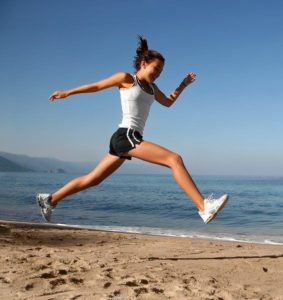
Balanced Plan -> Period -> Weeks -> Workouts -> Balanced Form -> Body -> Mind
Carpe Viam!
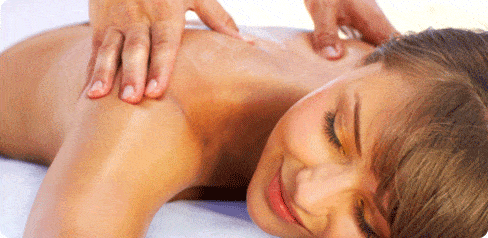
Improve Your Healing with DIY Sports Massage
Easy Exercises to Keep You Active
Of course, you know you should eat right and exercise. Most everyone understands the importance of fitness for health. Why is it so hard to stay motivated then? Consider the things that inspire you toward fitness. You may enjoy a particular healthy recipe or be a fan of a certain professional athlete. You might have a goal of running a race or participating in a certain sporting event.
The primary benefit of sports massage is to improve blood to the muscles. Sports massage is a highly effective healing technique also moves oxygen and nutrients to muscles. After you exercise, lactic acid builds up in the muscles. Sports massage can eliminate lactic acid buildup. You can decrease your recovery time by simply eliminating lactic acid buildup and improving the flow of lymphatic fluids. This process promotes the healing process (http://www.howtobefit.com/massage-for-runners.htm).
Consider these tips and methods of sports massage from the Pro academy of New York golf course, Shenandoah:
Frozen Water Bottle – Most athletes are familiar with the concept of rest, ice, compression and 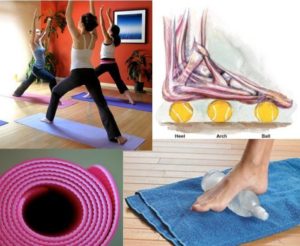 elevation (RICE). A frozen water bottle is an affordable way to ice the muscles and massage them at the same time. The ice will reduce the swelling and soothe your extremities as you roll your muscle with the water bottle. Consider this low-cost at-home massage remedy after your workout.
elevation (RICE). A frozen water bottle is an affordable way to ice the muscles and massage them at the same time. The ice will reduce the swelling and soothe your extremities as you roll your muscle with the water bottle. Consider this low-cost at-home massage remedy after your workout.
Tennis Ball – If you don’t need the ice, try a tennis ball to massage your muscles. Tennis balls can also be used on the back and legs also. This method is effective for working out the knots in the foot. You can roll the feet over the tennis ball from toe to heel for the most effective results.
Soup Cans – Soup cans are also used to massage the feet and legs. Consider rolling your feet over cans or rolling the cans over your legs to relieve tension and pain. As the pain dissipates from the area of the body
where the soup cans are applied, recovery will begin. This will prepare you for your next workout session.
PVC Pipe – this is an inexpensive alternative to foam rollers. 10″ pipe is best and it is easy obtained from your local Home Depot or Loews. If a little cushion is needed the pipe can be wrapped in several layers of contact paper and secured with duct tape. You can then use it to massage your calves, hamstrings and even you lower and upper back just by rolling on it. It will easily break up the toxins that are located within the muscle and allow them to pass through the membrane and out through the endocrine system.
Training is Better With Sports Massage
There is nothing better than a nice sports massage to start the healing process. Most athletes have made the massage a part of marathon training. Certainly, the benefits of these massages have been proven. Consider sports massage for less painful and more effective training. A healthy life is easy with simple changes. Take baby steps. Remember that moderation is key in all things. Indulge from time to time, but treat the body as the precious temple that it is. When setting your health goal start small. Choose a goal
that is attainable and reasonable.
(This was written by Michelle Pino with some added content by the IronGoof specifically for IronGoof.Com)

